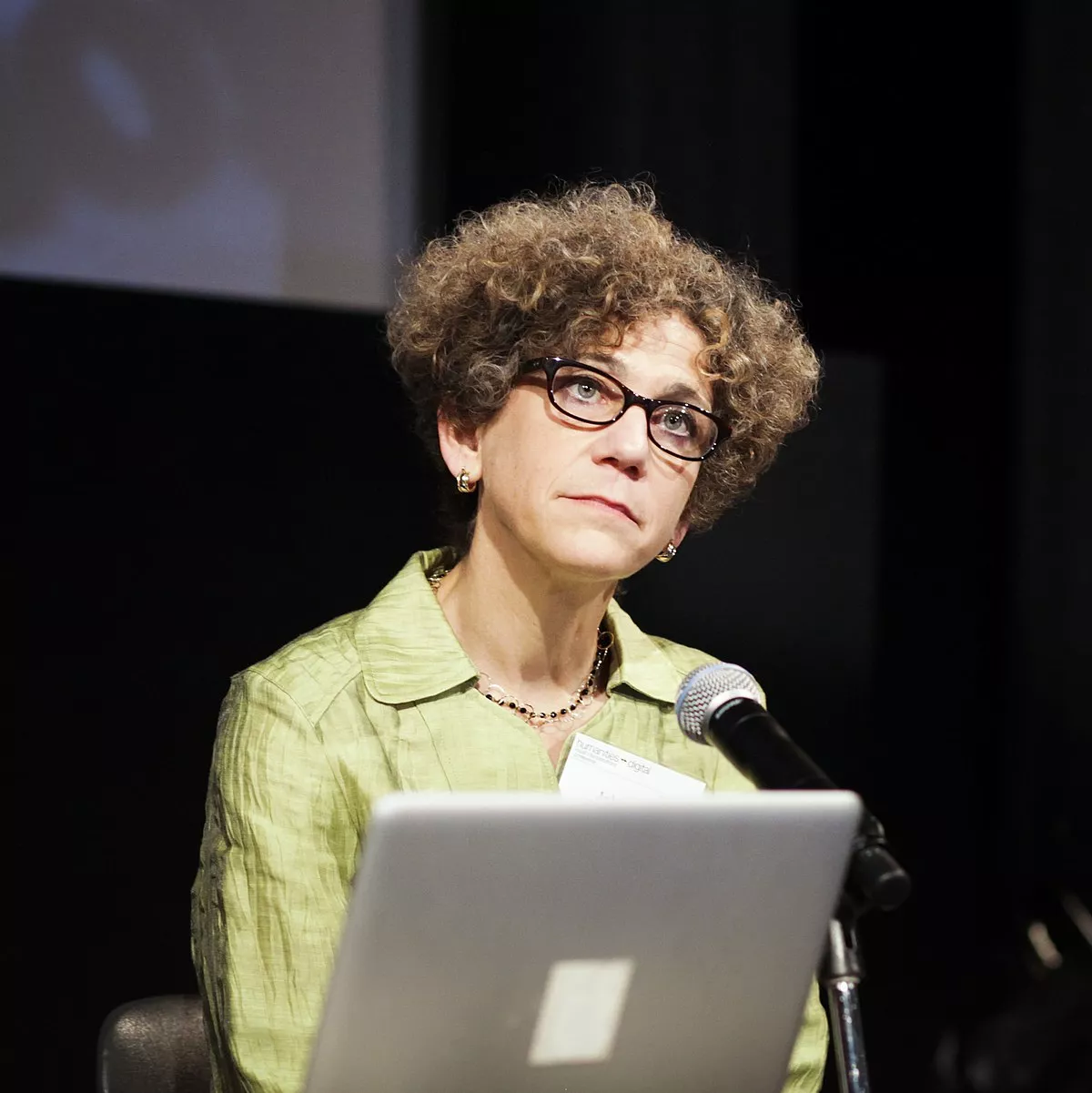 1.
1. Johanna Drucker was born on May 30,1952 and is an American author, book artist, visual theorist, and cultural critic.

 1.
1. Johanna Drucker was born on May 30,1952 and is an American author, book artist, visual theorist, and cultural critic.
Johanna Drucker's scholarly writing documents and critiques visual language: letterforms, typography, visual poetry, art, and lately, digital art aesthetics.
Johanna Drucker is currently the Martin and Bernard Breslauer Professor in the Department of Information Studies at the Graduate School of Education and Information Studies at UCLA.
Johanna Drucker's father was a cartoonist whose works were published in diverse publications as The Saturday Evening Post and The New Yorker.
Johanna Drucker was previously the Robertson Professor of Media Studies at the University of Virginia, and has been on the faculties of Purchase College, SUNY, Yale University, Columbia University, Harvard University and the University of Texas, Dallas.
Johanna Drucker has been the Digital Humanities Fellow at the Stanford Humanities Center, the inaugural fellow for the Beinecke Library, Digital Cultures Fellow at UC Santa Barbara, and Mellon Faculty Fellow in Fine Arts at Harvard University.
Johanna Drucker was elected as a Fellow of the American Academy of Arts and Sciences in 2014.
Johanna Drucker printed her first book in 1972 and has been active in the field for over five decades.
Johanna Drucker's work has been translated into Korean, Catalan, Chinese, Spanish, French, Hungarian, Danish and Portuguese.
Johanna Drucker's research focuses on alphabet historiography, modeling interpretation for electronic scholarship, digital aesthetics, the history of visual information design, history of the book and print culture, history of information, and critical studies in visual knowledge representation.
Johanna Drucker emphasized, for the first time, the extent to which typographic activity furthered debates about the very nature and function of the avant-garde.
Johanna Drucker provides close readings of contemporary language artists and the use of language in cyberspace.
In collaboration with Brad Freeman, Johanna Drucker produced Nova Reperta, inspired by illustrations by the sixteenth-century Flemish artist Johannes Stradanus.
Johanna Drucker collaborated again with Freeman on Emerging Sentience, a work that reflects Drucker's interest in the literature of artificial intelligence and the development of digital media.
In Sweet Dreams: Contemporary Art and Complicity, Johanna Drucker calls for a revamp of the academic critical vocabulary to something more befitting new forms and practices in contemporary art, especially as it engages with material culture.